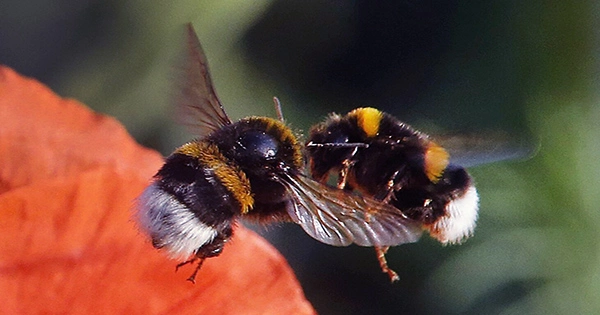A Californian court decided that bumblebees are fish in February, a decision that was hailed as a “wonderful day” for the state’s bees. Now, the state Supreme Court has examined them more closely and determined that they are fish, in a decision that benefits the state’s insects (aka fishies).
Bees are not fish biologically, as the California Supreme Court and Third District Court of Appeal judges recognized in their decisions. Expect no Finding Nemo/Bee Movie crossover any time soon. Bumblebees are now protected under the California Endangered Species Act after the court ruled that they can be classified as invertebrates.
In their summary, the justices of the Third District Court of Appeal stated that the question at hand was whether the bumble bee, a terrestrial invertebrate, qualified as a fish. Birds, amphibians, reptiles, mammals, and fish are all considered “endangered species” under the state’s endangered species statute. In accordance with this definition, bees are not considered insects.
It was “ambiguous,” according to the judges, whether the legislature intended for the concept of fish to only apply to aquatic creatures. In fact, they point out, a terrestrial mollusk is already covered by the statute.
“Naturally, a fish, as the phrase is used in everyday speech, lives in aquatic surroundings. However, as noted by the Department and the Commission, the technical term in section 45 [of the California Fish and Game Code] includes mollusks, invertebrates, amphibians, and crustaceans, all of which cover both terrestrial and aquatic species “declared the judges.
The Trinity bristle snail, a terrestrial mollusk and invertebrate, is a threatened species under the Act due to the express language in section 2067 and could have only qualified as such under the definition of fish under section 45.
The court ruled that invertebrates can be listed as endangered or threatened species by the Fish and Game Commission.
“Next, we examine whether the Commission has the sole jurisdiction to list aquatic invertebrates. We determine that the response is “no.” “It read. Although aquatic species are generally known to be referred to by the term “fish,” the term of art used by the Legislature in the definition of fish in section 45 is not so restricted.
In order to give them more protection, bumblebees are considered fish if the Fish and Game Commission so declares. The decision has been applauded by conservationists and others wanting to safeguard insects, despite being needlessly bizarre in terms of how to fish and bees are often described.
The Xerces Society for Invertebrate Conservation’s endangered species director, Sarina Jepsen, said, “We are thrilled with the California Supreme Court’s ruling. “Today’s ruling confirms that all of our state’s threatened native species are covered by the California Endangered Species Act, which is essential to preserving our state’s renowned biodiversity.”
After the February judgment, Pamela Flick, California Program Director of Defenders of Wildlife, released a statement saying that “bees and other pollinators are important to healthy ecosystems and the crucial pollination services they provide services all of us.”
According to the decision, additional insect species could be given the same protection that these bees already receive by being categorized as fish. In her opinion, Chief Justice Tani Cantil-Sakauye also stated that the legislature was free to define the law’s intent, such as by making it explicit that it applied to insects.
According to Rebecca Spector, West Coast Director of the Center for Food Safety, “this court ruling is crucial to maintaining our food supply because one out of every three bites of food we eat comes from a crop pollinated by bees.” The ruling makes it clear that insects like bees are eligible for CESA safeguards, which are required to guarantee the survival and growth of populations of endangered species.
















